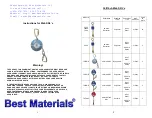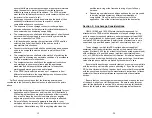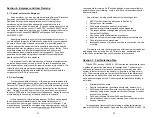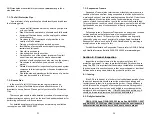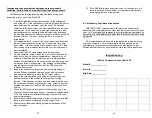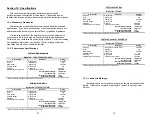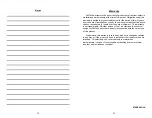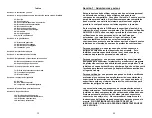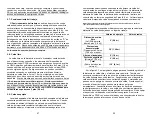
19
ensure that there are proper anchorages at appropriate intervals
along these paths to protect the users from these hazards
without exposure to swing-fall conditions. The PFAS selected
must limit the fall distance in order to avoid contact with the next
lower level in the event of a fall.
Anchorage connectors should be selected on the basis of their
suitability for attachment to the anchor point to ensure a
compatible and secure connection.
The exposure of the anchorage connector to sharp edges,
abrasive surfaces and other physical/structural hazards should
be considered when evaluating compatibility.
The competent person shall calculate the weight of all authorized
persons when fully equipped to ensure that they are within the
maximum capacity of the PFAS.
A full body harness meeting the requirements of Z359 shall be
selected, and it shall be sized to fit the user as per the
manufacturer’s instructions.
Connectors that are selected shall be suitably sized and shaped
so as to be compatible with the devices to which they will be
attached.
The competent person shall select the method of protecting the
equipment from damage by workplace conditions, in accordance
with the manufacturer’s instructions.
The competent person shall check the equipment instructions
and markings to ensure compliance with the appropriate
standards and will ensure that manufacturer’s instructions;
markings and warnings are read and followed.
If the PFAS that is selected is made up of components from
different manufacturers, the competent person will ensure that
these components are compatible.
FallTech strongly encourages that the following points also be
considered in the course of product selection, in addition to the points
above:
Select the anchorage connector that is most appropriate for your
application and for the anchor point to which it will be attached.
While sling-style anchors are popular because of their versatility,
they are not always the best choice where sharp or angular
edges are present on the structure to which they are attached.
Select a full body harness of appropriate durability for your
workplace which contains all of the attachment elements that you
will require. Never attach any SRL to anything other than the
20
back/dorsal d-ring or the front/chest d-ring of your full body
harness.
Depending on workplace conditions and hazards, you may need
to employ multiple systems or different combinations of
components. Do not try and force the system to fit the
application. Use of the correct equipment is the best policy.
Section 5: Anchorage Considerations
OSHA 1910.66 and 1926.502 state that anchorages used for
attachment of a PFAS must be independent of any anchorage being
used to support or suspend platforms, and must support at least 5,000
lbs. per user attached, or be designed, installed and used as part of a
complete PFAS which maintains a safety factor of at least two, and is
supervised by a qualified person (architect, structural engineer, etc.).
The anchorage to which this SRL is attached must capable of
sustaining static loads in directions applied by the personal fall arrest
system of at least 3,600 lbs (or at least twice the expected dynamic load)
with certification of a qualified person (architect, structural engineer,
etc.), or 5,000 lbs in the absence of certification. If multiple personal fall
arrest systems are being attached to the same anchorage, the minimum
values stated above must be multiplied by the number of users.
Ensure that the anchorage connector that you are using is compatible
with the anchor point to which you are attaching it. If you are using this
SRL with a Horizontal Lifeline, tripod or davit, ensure that it is compatible
with these systems by checking the manufacturer’s instructions for these
systems for the minimum performance requirements of deceleration
devices.
Be sure that your anchorage is mounted overhead or above the level
of the back d-ring of your full body harness. Be sure to calculate your
clear-fall (as discussed in section 2.9) and to avoid swing fall hazards.
Ensure the fall path is clear of obstructions and impalement hazards.
Summary of Contents for Web SRL 7262
Page 39: ...77 Notas 78 Notas...

